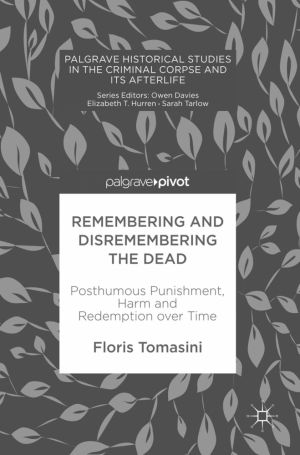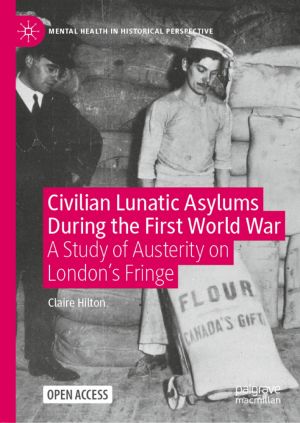Civilian Lunatic Asylums During the First World War
A Study of Austerity on London's Fringe
by Claire Hilton
DescriptionDetailsHashtagsReport an issue 






Book Description
This open book explores the history of asylums and their civilian patients during the First World War, focusing on the effects of wartime austerity and deprivation on the provision of care. While a substantial body of literature on ‘shell shock’ exists, this study uncovers the mental wellbeing of civilians during the war. It provides the first comprehensive account of wartime asylums in London, challenging the commonly held view that changes in psychiatric care for civilians post-war were linked mainly to soldiers’ experiences and treatment. Drawing extensively on archival and published sources, this book examines the impact of medical, scientific, political, cultural and social change on civilian asylums. It compares four asylums in London, each distinct in terms of their priorities and the diversity of their patients. Revealing the histories of the 100,000 civilian patients who were institutionalised during the First World War, this book offers new insights into decision-making and prioritisation of healthcare in times of austerity, and the myriad factors which inform this.This open book is licensed under a Creative Commons License (CC BY). You can download Civilian Lunatic Asylums During the First World War ebook for free in PDF format (5.3 MB).
Book Details
Title
Civilian Lunatic Asylums During the First World War
Subject
History
Publisher
Palgrave Macmillan
Published
2021
Pages
304
Edition
1
Language
English
ISBN13
9783030548704
ISBN10
3030548708
ISBN13 Digital
9783030548711
ISBN10 Digital
3030548716
PDF Size
5.3 MB
License

Related Books

This book is a multidisciplinary work that investigates the notion of posthumous harm over time. The question what is and when is death, affects how we understand the possibility of posthumous harm and redemption. Whilst it is impossible to hurt the dead, it is possible to harm the wishes, beliefs and memories of persons that once lived. In this wa...

Books about Oxford have generally focused on the University rather than the city. This original book on the local politics of Oxford City from 1830 to 1980 is based on a comprehensive analysis of primary sources and tells the story of the city's progressive politics. The book traces this history from Chartism and electoral reform in the mid-ni...

This book discusses how Norwegian shipping companies played a crucial role in global shipping markets in the 20th century, at times transporting more than ten per cent of world seaborne trade. Chapters explore how Norway managed to remain competitive, despite being a high labour-cost country in an industry with global competition. Among the feature...

This open book is unique in its contents. No other title in the book market has tackled this important subject. It introduces innovation as a way of practice for world-class universities. It, then, discusses the criteria for being innovative in the academic world. The book selects some of the top innovative world-class universities to study the fac...

Vienna, the capital of the Austro-Hungarian Empire, but in a world in which the First World War did not take place: a man disappears. Ludwig Pechstein, of the Pechstein Security and Investigations Agency, is asked to investigate, The trail leads to gruesome secret chemical warfare research programmes, a land commune in Switzerland, smugglers of ava...

Carried by a long-awaited wind, the chlorine cloud passed within a few minutes through the British and French trenches, leaving behind at least 1,000 dead and 4,000 injured. This chemical attack, which amounted to the first use of a weapon of mass destruction, marks a turning point in world history. The preparation as well as the execution of the g...

